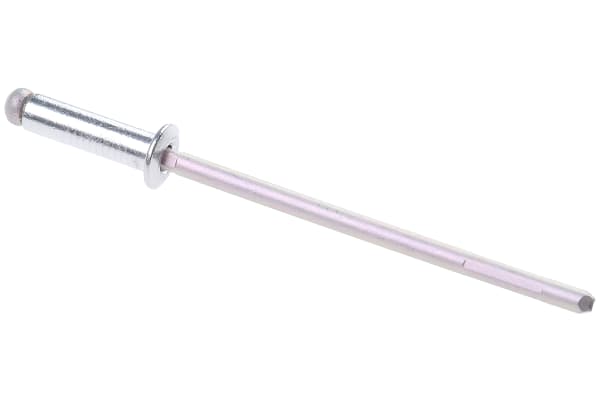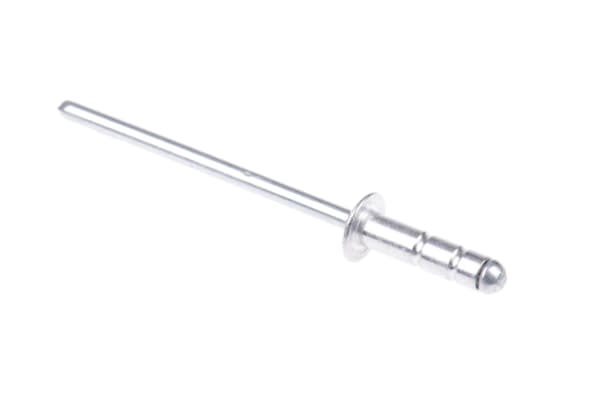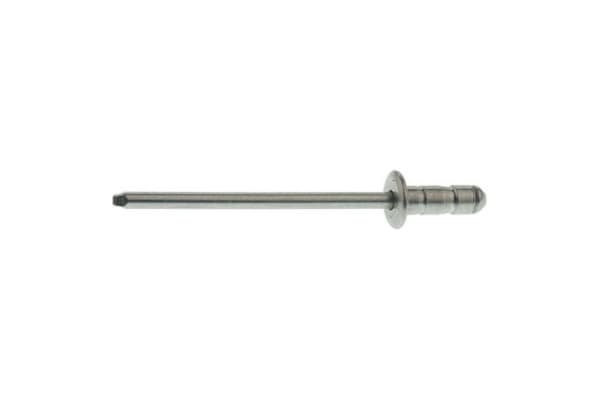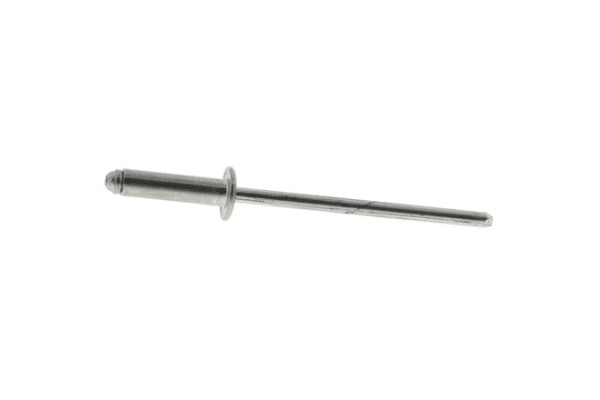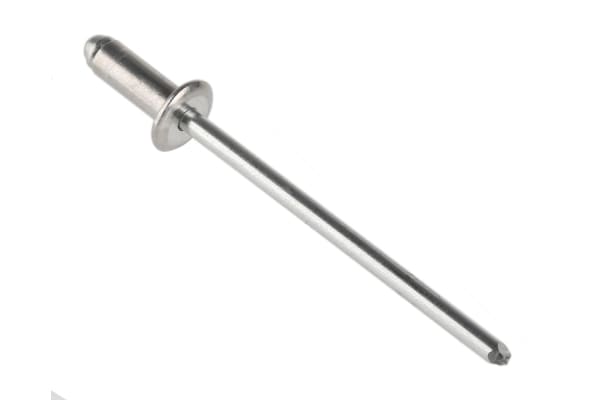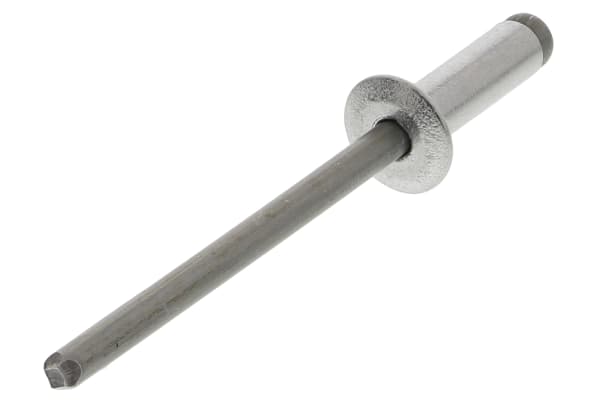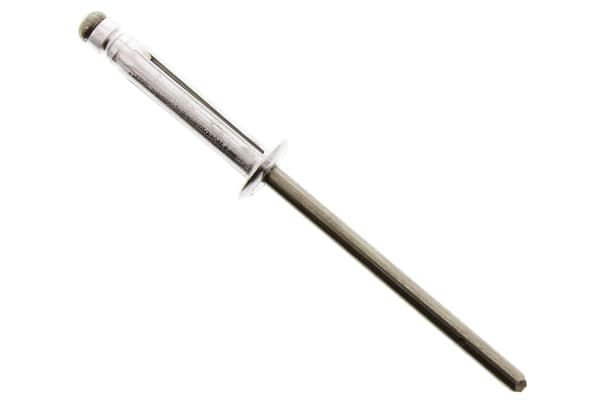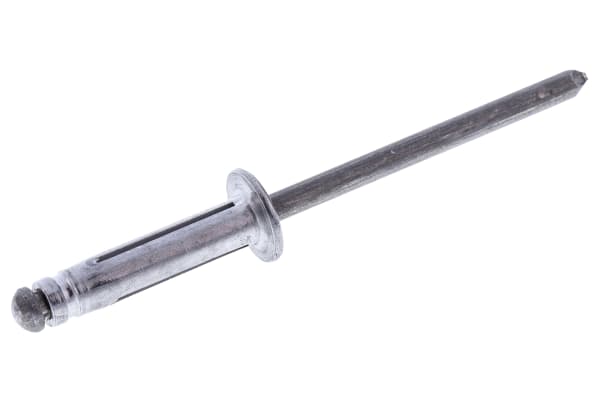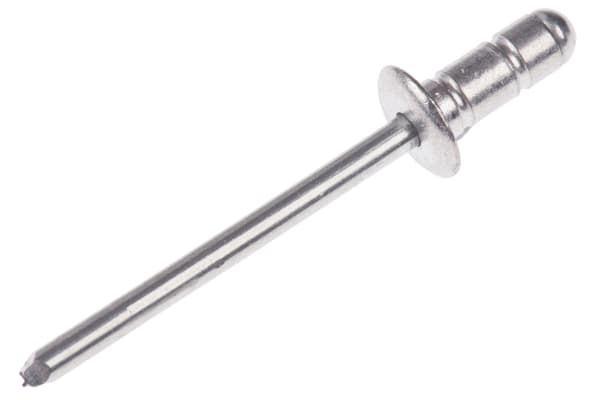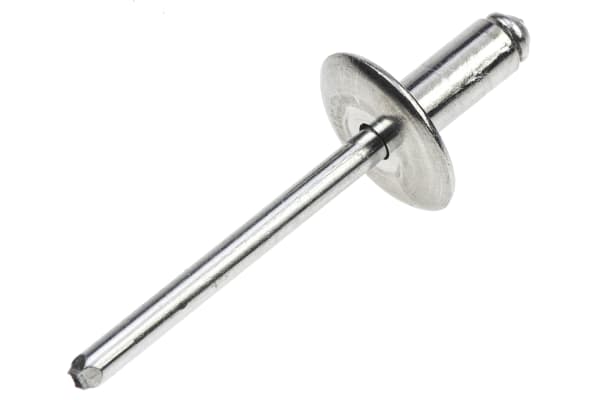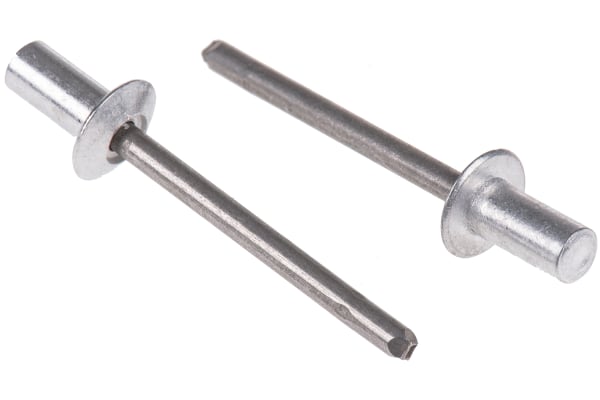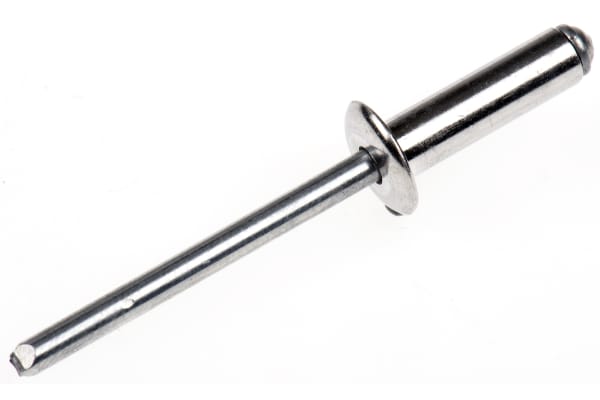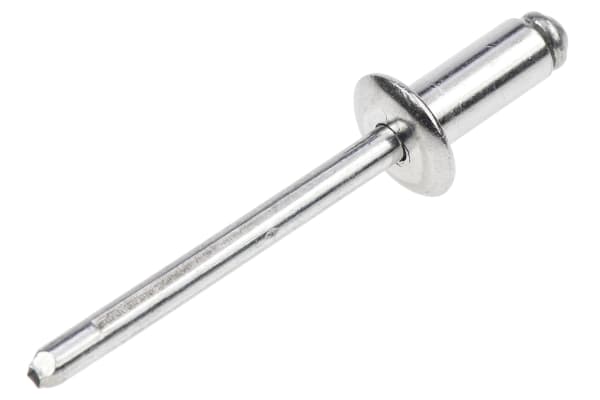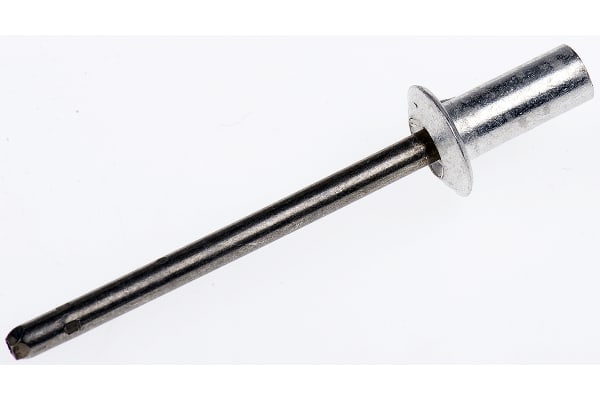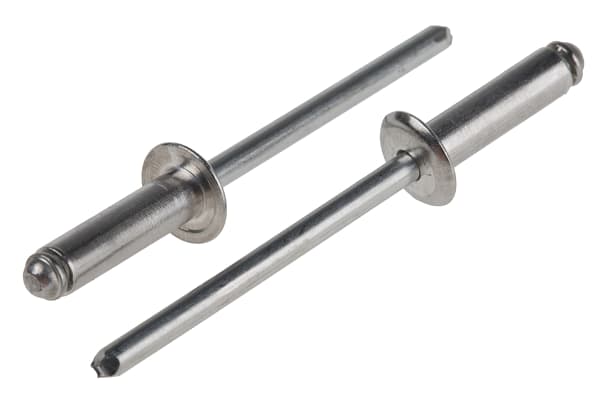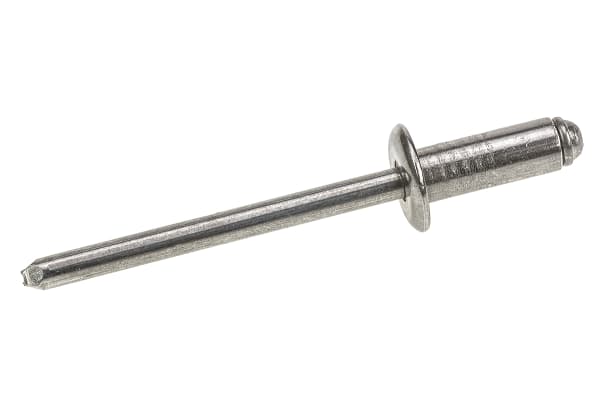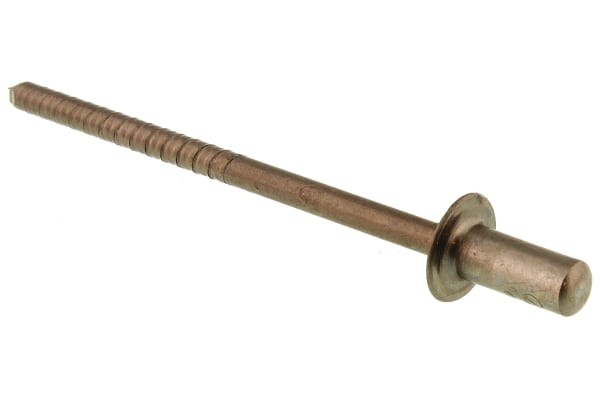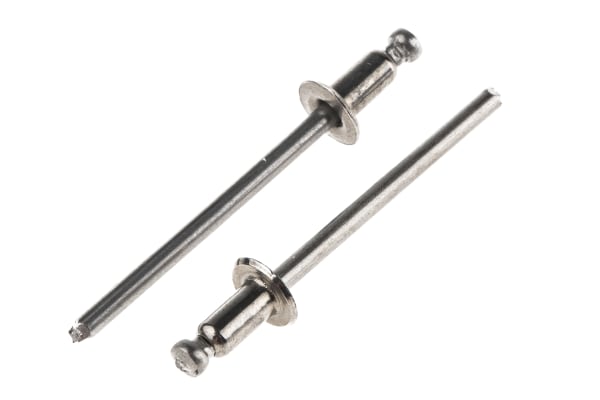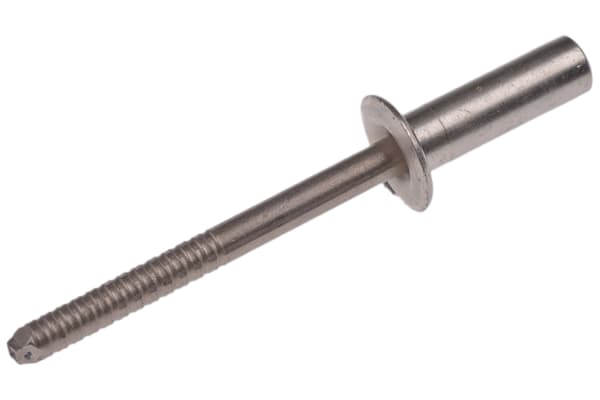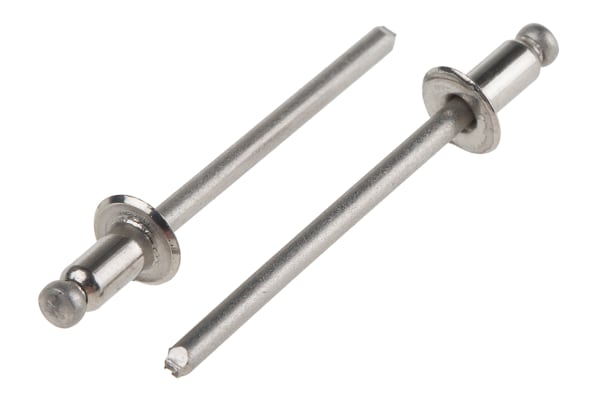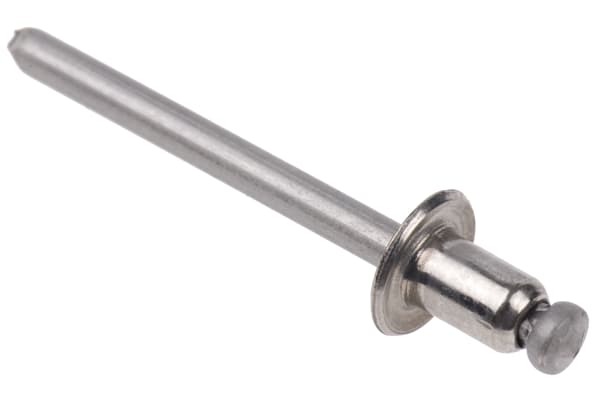Rivets
Rivets are mechanical fasteners that consist of a smooth cylindrical shaft with a head on one end and a tail at the opposite end. On the installation, a riveter places a rivet in a pre-drilled hole, and the tail is set or bucked (i.e., deformed) with a rivet gun, rivet tool or pneumatic hammer so that it expands to about 1.5 – 2 times the original shaft diameter, holding the rivet in place. They are used to permanently join two steel, aluminium or copper plates usually in mechanical applications where it is imperative that joints do not become loose and cause failure.Types of rivetsThere are many types of rivets available:Blind Rivets also known as drive rivets have a mandrel through their centre that once inserted into pre-drilled holes of the parts they are joining, the blind end expands and the mandrel snaps off. They can be installed from only one side making them ideal for areas where access is limited.Tubular Rivets have a shank hole within the shaft of the rivet and are available with different head styles such as the oval, button, flat and countersunk.Snap Rivets are supplied pre-assembled and simply push into the required holes providing a fast and neat solution.Solid rivets, or the original rivet. These solid fasteners resist water, vibration, tampering, and other severe conditions.Threaded insert and rivet nuts which are applied like a classic rivet integrate seamless, strong, and permanent threading in fragile sheet materialsWhere can be Rivets used?Rivets are intended to offer awesome flexibility, enabling them to fasten wood, metal, plastic and substantially more. They are especially suited for restricting delicate, thin materials and generally fragile connections. Most common, everyday rivet applications include:Building and constructionTransportation and infrastructureWoodworking and decorative finishingFine metalworkAviation, aerospace, and automotiveRivet material selection:AluminiumSteelStainless Steel RivetsNickel Copper Alloy RivetsCopper Rivets
-
POP Aluminium Blind Rivet, 2.5mm
IDR253,833.80Bag (1 Bag of 100) -
POP Aluminium Blind Rivet, 3.2mm
IDR163,208.84Bag (1 Bag of 100) -
POP Aluminium Blind Rivet, 3.2mm
IDR58,948.18Bag (1 Bag of 100) -
POP Aluminium Blind Rivet, 3.2mm
IDR132,056.51Bag (1 Bag of 100) -
POP Aluminium Blind Rivet, 3.2mm
IDR134,049.42Bag (1 Bag of 100) -
POP Aluminium Blind Rivet, 3mm
IDR63,458.45Bag (1 Bag of 100) -
POP Aluminium Blind Rivet, 4.18mm
IDR748,599.93Bag (1 Bag of 100) -
POP Aluminium Blind Rivet, 4.18mm
IDR277,119.38Bag (1 Bag of 100) -
POP Aluminium Blind Rivet, 4.8mm
IDR86,429.36Bag (1 Bag of 100) -
POP Aluminium Blind Rivet, 4.8mm
IDR372,359.50Bag (1 Bag of 100) -
POP Aluminium Blind Rivet, 4.8mm
IDR279,741.63Bag (1 Bag of 100) -
POP Aluminium Blind Rivet, 4.8mm
IDR201,703.47Bag (1 Bag of 100) -
POP Aluminium Blind Rivet, 4.8mm
IDR155,866.54Bag (1 Bag of 100) -
POP Aluminium Blind Rivet, 4mm
IDR180,620.58Bag (1 Bag of 100) -
POP Aluminium Blind Rivet, 4mm
IDR164,887.08Bag (1 Bag of 100) -
POP Aluminium Blind Rivet, 4mm
IDR145,062.87Bag (1 Bag of 100) -
Pop Rivets Stainless Steel Blind Rivet, 3.2mm
IDR496,654.15Bag (1 Bag of 100) -
Pop Rivets Stainless Steel Blind Rivet, 3.2mm
IDR1,148,755.28Bag (1 Bag of 500) -
Pop Rivets Stainless Steel Blind Rivet, 3.2mm
IDR446,306.95Bag (1 Bag of 500) -
Pop Rivets Stainless Steel Blind Rivet, 4.8mm
IDR788,248.35Bag (1 Bag of 100) -
Pop Rivets Stainless Steel Blind Rivet, 4mm
IDR590,320.92Bag (1 Bag of 100) -
POP Stainless Steel Blind Rivet, 3.2mm
IDR183,242.83Bag (1 Bag of 100) -
POP Stainless Steel Blind Rivet, 4.8mm
IDR628,395.99Bag (1 Bag of 100) -
POP Stainless Steel Blind Rivet, 4.8mm
IDR196,878.53Bag (1 Bag of 100)



